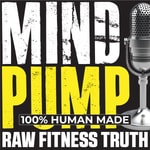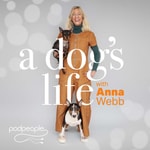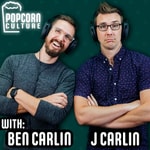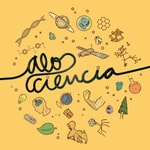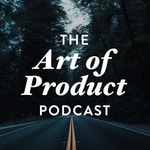Food Non-Fiction – Details, episodes & analysis
Podcast details
Technical and general information from the podcast's RSS feed.
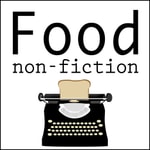
Food Non-Fiction
Lillian Yang
Frequency: 1 episode/28d. Total Eps: 75

Recent rankings
Latest chart positions across Apple Podcasts and Spotify rankings.
Apple Podcasts
🇨🇦 Canada - food
02/08/2025#61🇨🇦 Canada - food
01/08/2025#38🇨🇦 Canada - food
17/06/2025#91🇨🇦 Canada - food
16/06/2025#66🇨🇦 Canada - food
15/06/2025#41🇨🇦 Canada - food
04/04/2025#98🇨🇦 Canada - food
03/04/2025#76🇬🇧 Great Britain - food
24/03/2025#74🇬🇧 Great Britain - food
08/02/2025#91🇬🇧 Great Britain - food
07/02/2025#48
Spotify
No recent rankings available
Shared links between episodes and podcasts
Links found in episode descriptions and other podcasts that share them.
See all- https://www.soylent.com/
9 shares
- http://www.templegrandin.com/
7 shares
- http://www.foodnonfiction.com
7 shares
RSS feed quality and score
Technical evaluation of the podcast's RSS feed quality and structure.
See allScore global : 53%
Publication history
Monthly episode publishing history over the past years.
#73 Ignacio Nicknamed Nacho
mercredi 21 octobre 2020 • Duration 12:04
This Food Non-Fiction episode tells the incredible true story of nachos. This snack was created by and named after Ignacio Anaya who's nickname was Nacho.
#72 When Impossible Burgers Became Possible
Episode 72
mardi 14 avril 2020 • Duration 25:41
This Food Non-Fiction episode tells the incredible true story of meat alternatives. We talk about the early history of meat alternatives and then we talk to the Impossible Foods team to understand how this modern meat alternative was created.
#63 Tony the Tiger
Episode 63
lundi 22 mai 2017 • Duration 05:01
This Food Non-Fiction podcast episode is about the famous cereal mascot - Tony the Tiger.
Thanks to Looperman Artists for the Music:
Apollo by SANTIAGOO
#62 - The Palace Kitchen
Episode 62
lundi 6 mars 2017 • Duration 18:46
In this Food Non-Fiction episode, we talk to Peter Brears about what it was like to work in King Henry VIII's kitchen.
Thank you to our interviewee:
Peter Brears - author of "Cooking & Dining in Tudor & Early Stuart England"
Thank you to Looperman artists:
Bright Absurdity - Hip-hop Piano by JulietStarling
xxiii Sampled Medieval Italian Acoustic Guitar by Julietstarling
Artisticstrings HD Part 1 by Jawadalblooshi
Dusted Jazz Loop by LeuNatic
Brass - 10 - 130 Bpm by SoleilxLune
AV Melody Loop 4 by Angelicvibes
#61 - Turnspit Dogs
Episode 61
dimanche 29 janvier 2017 • Duration 17:43
This is the incredible true story of Turnspit Dogs.
The turnspit dog is an extinct breed of dog. This breed was used in kitchens to turn roasting spits back when roasting was done over an open fire, rather than in an oven. The earliest known reference to to this breed is in a book called "De Canibus Britannicis" by Dr. Caius. In this book, which was published in 1570, turnspit dogs were described as a kitchen service dog.
Turnspit dogs were put into wooden wheels (that looked like giant hamster wheels), and made to run inside the wheel, which turned a chain, which turned the spit.
Thank You to Our Interviewee:
Ciara Farrell from The Kennel Club
Thank You to this Looperman Artist for the Music:
Melody by Slice0fCake
#60 The Carrot Myth
Episode 60
jeudi 1 décembre 2016 • Duration 13:48
Did your parents ever tell you that carrots improve your night vision? Have you ever heard that this is a myth? So what is the real story?
Thank You to Our Interviewee:
Maya Hirschman from The Secrets of Radar Museum
Thank You to This Looperman Artist for the Music:
Piano Loop Will-Power 94 by designedimpression
Special Thanks to Public Service Broadcasting for the Music:
#59 Trick Or Treat!
Episode 59
lundi 31 octobre 2016 • Duration 12:30
This episode explores the history of Halloween and the vague beginnings of trick or treating!
Thank You To Our Interviewee:
Professor Nick Rogers
Thank You To Looperman Artists for the Music:
Melody by Slice0fCake
Father Grimlin - Temperament Strings by JulietStarling
Dark Creepy Piano by Zaqsi
#58 All Your Favorite Chocolates
Episode 58
mercredi 12 octobre 2016 • Duration 15:56
Inspired by the book, "Chocolate Wars", by Deborah Cadbury, today we're telling you the incredible true story of how how the biggest chocolate companies in the world fought for our tummies and tastebuds through innovation after innovation that eventually turned cocoa products from a drink, to an edible chocolate, to a milk chocolate powder, and finally, to our beloved milk chocolate bar.
In the 1860s/70s cadbury experimented with and successfully created the first mass-manufactured chocolate bar. Milk chocolate bars did not yet exist at this time, so it would have been a plain dark chocolate bar.
This was a big breakthrough. The fact that these bars could be mass-produced meant that they could be cheaper...more affordable, so more people could buy it and try it.
By the 1890s, everyone in Britain was buying cocoa products - it was no longer just an exotic treat for the rich. In the decade from 1890 to 1900, the amount of cocoa consumed in Britain was doubled.
Over in Switzerland, around the same time that Cadbury had managed to mass-produce their plain chocolate bar, Daniel Peter was working on making the world’s first milk chocolate powder.
We know that Daniel Peter happened to be neighbors with Henri Nestlé of Nestle fame. And according to one story, Daniel had a baby daughter, named Rose, who wouldn’t take breast milk. So he asked his neighbor Henri for help, because he had just started selling a powdered milk developed for babies.
So baby Rose was saved, because she could drink Nestlé’s powdered milk. At the same time her father, Daniel, got the idea to use the powdered milk to create a milk chocolate powder, which of course did not exist at the time. Although, people were already drinking cocoa powder with milk, so they would have been familiar with the flavor.
In 1875, Daniel su cceeded in making the world’s first milk chocolate powder - it was called “Chocolats au Lait Gala Peter”. It was a success.
He thought about making his drink into a chocolate bar...a milk chocolate bar. After years of working to create a milk chocolate bar, Daniel finally created one he could sell - he called it “Gala Peter”. The year was 1886.
Elsewhere in Switzerland, at around the same time, another important chocolate innovation was happening.
Rodolphe Lindt, of Lindt chocolate fame, created a much smoother chocolate after pressing the beans for longer than the norm. He experimented with different temperatures and timings to get as much cocoa butter folded into his mix as possible. This created a delicious melt-in-your-mouth chocolate. (Even today Lindt chocolates are known to be silky smooth.)
He invented a machine called “a conch” because it looked like a conch shell. Chocolate bars used to be hard and gritty, but now they could be softer and smoother.
So what we’re seeing at this time is more and more people getting into the business of cocoa, and working hard and innovating to get ahead.
Now, back in Britain, Cadbury’s innovations made them very successful. As Quakers, George and Richard Cadbury wanted to use their money to create an ideal place for their employees to work.
In 1878, they bought the idyllic land for their model factory that would be surrounded by nature. The factory was a manufacturing marvel. It was built to be one-storey tall, so that goods would not have to go up and down stairs.
And they built cottages and gardens around it with spaces to play sports or relax. They called the model Town Bournville, and Bournville would be the inspiration for model towns to come. Including, the town of Hershey, which we’ve done an episode on.
At around this time in the 1870s, young Milton Hershey was still in Philadelphia trying to make his candy shop successful.
In England at that time the Quaker-led chocolate companies dominated. The 3 Quaker companies, Fry, Cadbury and Rowntree were all powerhouses. But they were all being threatened by European competition. You can imagine it must have been hard to compete with Lindt’s smooth chocolate and Peter’s milk chocolate coming out of Switzerland. So the Quaker firms discussed pricing and advertising with one another, essentially working together not to destroy each other.
Cadbury had to figure out how to make a product that could compete with Swiss chocolate. After a trip to Switzerland and much experimentation, George Jr. created a chocolate bar you may have heard of - it was Cadbury’s Dairy Milk, and it launched way back in 1905. That means Dairy Milk has been around for over one hundred years.
The first world war really leveled out the chocolate playing field. The big British Quaker companies, including Cadbury, had to withdraw their best products.
The Swiss, including Nestle, were very impacted because their home market was small and they had relied on selling across Europe and abroad, but exporting became dangerous. The solution was to borrow a ton of money and invest in companies overseas.
In America, Hershey was not affected by the first world war. And soon after the war, another chocolate contender surfaced in America alongside Hershey. It was Mars, which used to be called the Mar-O-Bar Company.
The countline that was created was the Milky Way which launched in 1924 and made Frank Mars’s Mar-O-Bar Company a success. Frank Mars and his son Forrest Mars built a new factory and went on to launch Snickers and 3 Musketeers bars. In 1933, the father and son had a fight over how to run the business.
After WWI, cadbury had to worry about competition from foreign companies like Nestle again. They had become more efficient after experiencing war-time rationing, and they knew they needed to use their efficiency to make and sell products more cheaply.
They also knew that they needed to make fewer types of chocolate and focus on mass producing key products.
Soon after WWI they launched Flake (1920), Cadbury’s Fruit and Nut bar (1926) which I love, and the original cream-filled chocolate egg (1923) which would eventually become today’s iconic Cadbury Creme Egg (1963).
Like Cadbury, the other chocolate companies rolled out fantastic new chocolate bars in the post-WW1 period. In the 1930s Forrest Mars came out with Maltesers. Then Rowntree came out with tons of innovations like - Chocolate Crisp (which was eventually named Kit Kat), and also Aero, and Smarties.
Eventually, Cadbury went public
And then Cadbury was taken over by Kraft, which I just learned is now called Mondelez International
Thank You to Our Interviewee:
Thank You to Looperman Artists:
Guitars Unlimited - Reaching Home 1 by MINOR2GO
Melody 126 Beats by Purge
#57 What Came First - the Cadbury or the Egg
Episode 57
jeudi 1 septembre 2016 • Duration 14:39
In this Food Non-Fiction podcast episode, we talk about the beginning of Cadbury. We go right back to a time before Cadbury even existed.
Thank You to Looperman Artists for the Music:
happily ever after strings perfect for movie score by nbeats26
oboe 65 70 bpm by soleilxlune
Funky Guitar by Neems 1 by Neems
For more information on the topic, we recommend this book:
"Chocolate Wars: The 150-Year Rivalry Between the World's Greatest Chocolate Makers" by Deborah Cadbury
#56 Waffle Frolic
Episode 56
mercredi 10 août 2016 • Duration 10:40
This Food Non-Fiction episode is about waffles! We talk about the beginning of waffles and the rise of waffles.
Thank You to Looperman Artists for the Music:
Guitars Unlimited - Reaching Home 1 by MINOR2GO
Guitars Unlimited - Reaching Home 2 by MINOR2GO
happily ever after strings perfect for movie score by nbeats26

